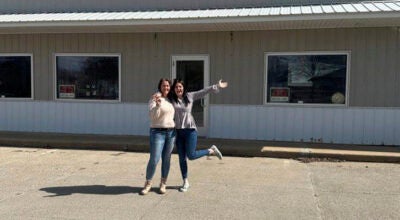MN 2020: A local sign of economic recovery
Published 11:03 am Friday, September 20, 2013
As Hormel builds odor reduction facility and other companies expand, will jobs, wages follow?
By Lee Egerstrom, Minnesota 2020 Economic Development Fellow
If all goes as planned, this time next year Hormel’s upgraded processing facility will be humming along, emitting less noise and odor, with opportunities for about 20 new workers.
Like several other companies on the I-90 corridor, Hormel’s $25 million expansion is both a barometer of the state and regional economy, and a testament that southern Minnesota is continuing its recovery.
Anecdotal evidence throughout Minnesota shows companies are again investing in manufacturing and expanding food processing facilities. In the past, these investments have produced what are generally thought of as “good jobs” — full-time positions that pay living- and middle-class wages, with benefits sufficient to support workers and their families.
However, early indications from state employment data show this recovery might not produce careers that help lift household incomes and compensation packages to achieve community-wide prosperity and reduce poverty. Consider these conflicting signals from recent Minnesota Department of Employment and Economic Development reports:
On Aug. 27, DEED released data showing 1,500 new jobs were created in the second quarter from 80 business expansions in the first half of this year. Of them, about three-quarters were expansions in and around the Twin Cities; a quarter of them are in rural manufacturing communities.
Despite job vacancies in rural Minnesota rising to a four-year high, the vast majority of new jobs simply aren’t that good, according to Jobs Now Coalition’s analysis of DEED data. Only half of all Greater Minnesota job openings are full-time. More than half offer no health care. Only one-third of all openings require education or training beyond high school, with just 14 percent of all openings requiring a four-year degree.
Minnesota wages have a lot of catching up. From 2000 to 2011, median household income had declined by more than $5,000 when adjusting for inflation.
Again, that might change when hiring catches up to expansions. We’ll know for sure comparing next year’s monthly numbers to this year’s DEED’s Business Expansion Report, which found manufacturing and food processing account for the most business and plant expansions announced this year. Most involve companies already based or that have existing operations here. Only a few, like Way Better Snacks that moved from New York to Minneapolis and Capital Safety Group, which relocated from London to Red Wing, have come in search of greener pastures.
West along I-90, Jackson has three business expansions underway that range from farm machinery to technology components manufacturing. Albert Lea, Dawson and Perham are among communities with food processing expansions underway. Alexandria, Chatfield, Fairmont, Fergus Falls and Wadena have plants expanding to produce agricultural or other heavy industry equipment.
All of these business and plant expansions combine two or more of rural Minnesota’s resource strengths, be they tie to the land, to area markets, to area infrastructure strengths, and especially local human resources. The same can be said for Sappi Fine Paper’s planned retrofitting of its Cloquet paper mill, and Grand Rapids-based Magnetation’s $120 million development of a mine and processing plant at Coleraine on the Iron Range.
On a side note, North Dakota’s oil fields helped provide a market for many products in southern Minnesota during an extreme slow period for manufacturing and home construction. However, that lifeline came with a big environmental price tag. Severe weather from carbon-induced climate change causes extreme flooding, then long periods of drought, creating booms and busts for ag producers.
Early signs show companies are investing and expanding again. The question at what level will human capital will be part of that comeback?





